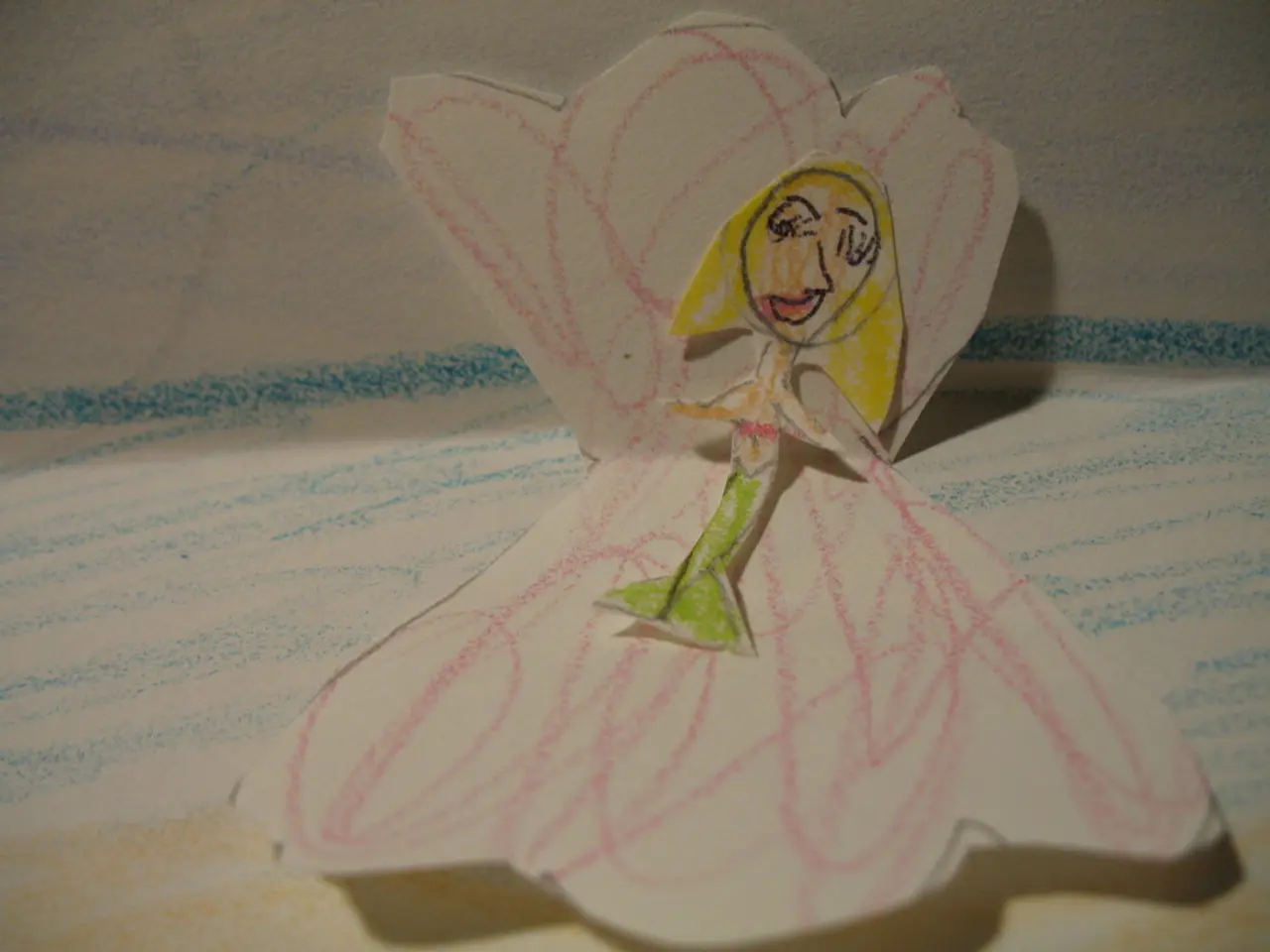Nostalgia meets an unsettling twist with the emergence of the Weirdcore art movement
============================================================
In the ever-evolving world of digital art, a new trend has emerged, capturing the imagination of a growing audience. This movement, known as Weirdcore, has been lingering at the fringes for years but is now gaining mainstream recognition.
Origins and Inspirations
Weirdcore, a modern digital art movement, originated in the early 2020s. Characterized by surreal, nostalgic, and unsettling visuals, it evokes a dreamlike atmosphere with low-quality, fragmented graphics reminiscent of both memories and early digital media. Its roots connect loosely to surrealism and retro digital imagery, combining elements like VHS tape degradation and old web aesthetics to evoke a sense of eerie familiarity and unease.
The origins of Weirdcore can be traced back to early Creepypasta forums and 4chan lore. These platforms, with their eerie and unsettling qualities, provided a fertile ground for the development of Weirdcore's chaotic and surreal visuals. The movement also draws inspiration from retro games, with pixelated, low-res visuals and distorted 3D effects reminiscent of 90s and early 2000s games.
Embracing the Mundane and Imperfect
Weirdcore is not rose-tinted nostalgia; it's more about evoking a sense of familiarity. It taps into memories of growing up in an analog age and transitioning to digital. The movement celebrates the mundane and embraces imperfection, deliberately embracing abstraction and chaos, lacking a fixed theme but instead mixing distorted, hazy visuals that feel reminiscent of both dreams and faded recollections.
Creating Weirdcore art doesn't require a degree in visual design; an internet connection, clip art, old photos, and a willingness to embrace imperfection are sufficient. This accessibility has contributed to its popularity, allowing a wide range of creators to participate and contribute to the movement.
Weirdcore in Narrative Form
The Backrooms, a digital campfire tale, is a prominent example of Weirdcore in narrative form. This eerie, ever-expanding network of empty, identical rooms has been the foundation for short films and games like Dreamcore.
Weirdcore Characters and Influence
Slender Man, an internet-born figure, can be considered a proto-Weirdcore character. Loab, the AI-generated woman who haunted the internet, is another example of early Weirdcore influence. Mainstream shows like Severance and certain video games (Alan Wake 2 and Silent Hill 2 Remake) have adopted Weirdcore-adjacent aesthetics.
The Appeal of Weirdcore
The appeal of Weirdcore art, which celebrates the mundane and embraces imperfection, is likely to increase as more of our collective memory is digitised and creative tools become more perfect and generative. Weirdcore stands apart due to its intentional wrongness and anti-design elements, offering a refreshing contrast to the polished, pristine aesthetics that dominate much of contemporary digital art.
In conclusion, Weirdcore is a digital art trend that is hitting a deeper nerve, tapping into dreamlike, eerie emotions. It is not just a movement among teens but a reflection of a broader cultural shift towards embracing the surreal, the nostalgic, and the unsettling in our digital world.
- The surreal, nostalgic, and unsettling visuals of Weirdcore art evoke a dreamlike atmosphere.
- Weirdcore's roots are loosely connected to surrealism and retro digital imagery.
- The movement's origins can be traced back to early Creepypasta forums and 4chan lore.
- Retro games provide an inspiration for Weirdcore, with pixelated, low-res visuals and distorted 3D effects.
- Weirdcore taps into memories of growing up in an analog age and transitioning to digital.
- An internet connection, clip art, old photos, and a willingness to embrace imperfection are required for Weirdcore art creation.
- The Backrooms, an ever-expanding network of empty rooms, is a prominent example of Weirdcore in narrative form.
- Slender Man, an internet-born figure, can be considered a proto-Weirdcore character.
- Loab, the AI-generated woman who haunted the internet, is another example of early Weirdcore influence.
- Mainstream shows like Severance and certain video games have adopted Weirdcore-adjacent aesthetics.
- The appeal of Weirdcore art increases as more of our collective memory is digitized and creative tools become more perfect and generative.
- Weirdcore stands apart due to its intentional wrongness and anti-design elements.
- Weirdcore offers a refreshing contrast to the polished, pristine aesthetics that dominate much of contemporary digital art.
- Weirdcore is a reflection of a broader cultural shift towards embracing the surreal, the nostalgic, and the unsettling in our digital world.




